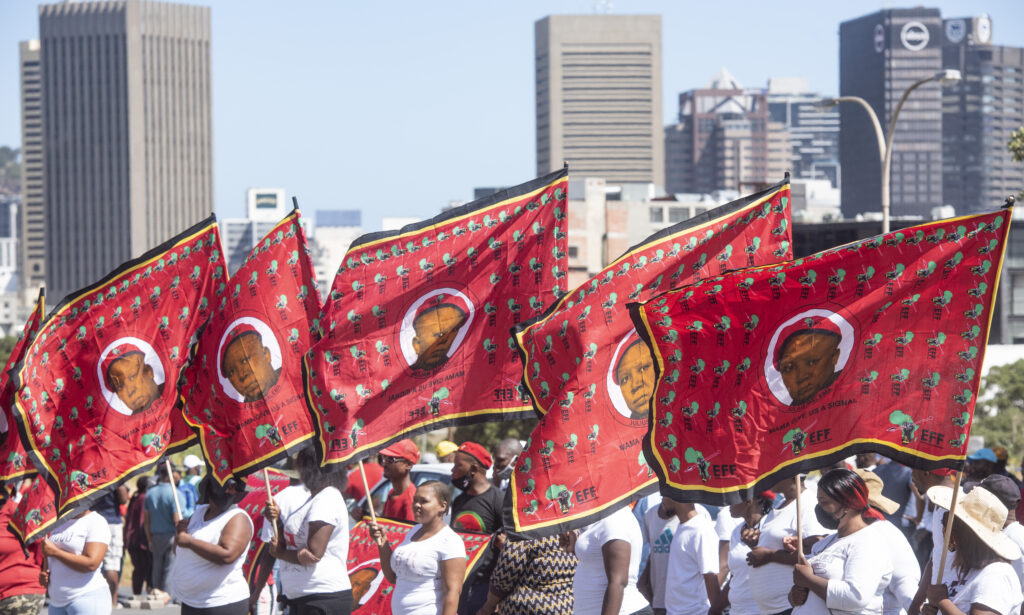With the festive season around the corner — a season famous for the excessive consumption of food and alcoholic beverages in Mzansi — a South African December is a tried and tested method for the destruction of hourglass figures and flat stomachs!
So while pondering on how to make it to January with clothes that still fit, I realised I was approaching this conundrum from the wrong angle: The season is not the destructive force — it was my relationship with food and alcohol. This festive season (and beyond), I am going to work on my relationship with food.
One pertinent issue food and I need to sort out is the supposed distinction between “black people’s food” and “white people’s food”, colloquially referred to as dijo tsa makgowa in my surroundings. This childhood myth continues to complicate my relationship with food and other people … It would be great to enjoy a salad dressing-free green salad instead of pap without crucifying stares from relatives at the dinner table!
Growing up in a working-class household, there was a distinction in my household (and many other black working-class households I had the pleasure of dining at) between “our” food and dijo tsa makgowa. This was particularly the case when it came to vegetables.
Black people’s vegetables were considered to be cabbage, carrots, beetroot, potatoes, onions, tomatoes and green pepper (if you want to be extra). This combination is locally known as “mixed green”. It is packaged in a long, transparent plastic bag and essentially contains entry-level vegetables.
When I was a child, this combo was mostly purchased for Sunday’s seven-colour plate as veggies were hardly part of the menu during the week except for cabbage. Oh beloved cabbage! Cabbage is the black working-class star vegetable. It is either cooked individually or with the desired protein … protein that might not be enough for the entire family. Cabbage is our protein stretcher – cabbage is our Janu-worry saviour. My late dad used to refer to cabbage as Johane 14 (John 14). Cabbage is the black working class’ Chuck Norris!
The consumption of any vegetables not part of the mixed-green combo was considered fancy and one would be accused of eating white people’s food. Jokes were disguised as insults, such as: “Jy hou jou wit” (You like acting like a white person) or “Jy hou jou beter” (You are acting superior) could even be hurled at one.
Seeing as working-class black people could mostly only afford the mixed green combo, the sight of any vegetable outside of this combo gave others the impression that one had money. For some reason, vegetables outside the mixed green combo were unquestionably considered to be expensive.
Could it be the assumed relation between these “fancy” vegetables and white people that made blacks assume that the above-mixed-green veggies were automatically expensive, as most South African whites were and continue to be in a better financial position than most black South Africans?
Even psychologically, wealth in South Africa continues to be associated with whiteness to such an extent that affluent black people and/or black people who hire other black people are referred to as umlungu.
Could it be that our mothers and grannies who were domestic workers only saw these above-mixed-green vegetables in the fridges and cupboards of their white employers and therefore assumed that it was reserved for them?
Was there an invisible “slegs vir blankes” sign on zucchini, olives, eggplant, red cabbage, patty pan squash, kale, broccoli, cauliflower … you name them?
Or was it the taste? Were white people the only ones who could have a refined palate? But why is a refined palate applicable to the taste of olives and not to the taste of dikorrie (chicken feet)?
As I developed into an independent-thinking adult who loves both mixed green and above-mixed-green vegetables, I struck me that this racial division of food had a broader impact than just the type of seven colours on one’s plate – it impacted one’s health. It impacted the health of the classes in society.
Why were some of the “superfood” vegetables classified as white’s people food?
Who reserved green salad for white/wealthy people and convinced black people to rather have fries as a side?
Why was it that calorie-dense food such as white bread, vetkoek, stamp and fried chicken is considered to be black people’s food?
Notwithstanding the psychological impact of systems such as apartheid on our eating habits, why do we struggle to disrupt the narrative that nutritious and healthy items such as cabbage, brown bread and pilchards are classified as “poor man’s food” and are consequently snubbed by most working-class blacks?
Why is the consumption of unhealthy, expensive take-away meals a symbol of status and wealth (albeit it contemporary) among the working class?
Don’t get me wrong – I am cognisant of the fact that we don’t all have financial and literal access to above-mixed-green vegetables nor to calorie-sensitive sample foods.
But even if we did have the access, I wonder how many of us would be able to break past these skewed and traumatic perspectives towards food? With money in the bank, would you be able to enjoy tinned pilchards and cabbage on Christmas Day and not suffer from abantu bazothini syndrome but only be concerned with the health benefits of the food you consume?
Don’t get me started on how highly infectious the abantu bazothini syndrome is during the festive season – that is a conversation for another day!
So instead of the proverbial suggestion that you “watch what you eat” during this festive season, I encourage you to join me in reflecting on our eating habits and beliefs – which traumas, which insecurities, which childhood doctrines, and so forth, influence what, how and when we eat.




